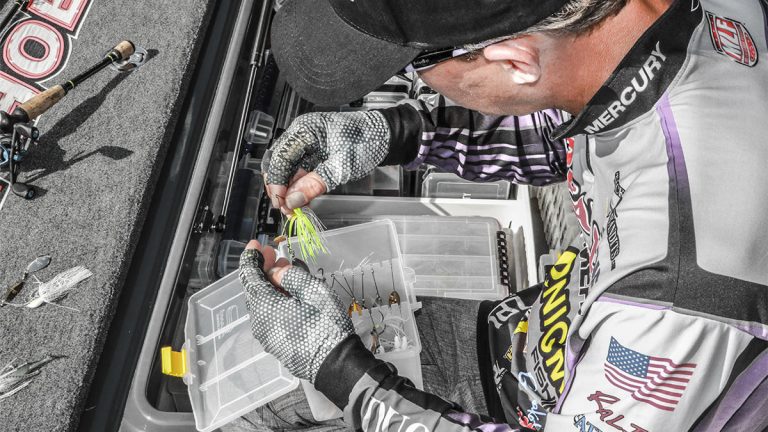In the ever-evolving world of fishing lures, the humble spinnerbait still holds a special place, and acclaimed angler Aaron Martens is here to remind us of its enduring effectiveness. While newer innovations grab the spotlight, Martens emphasizes that spinnerbaits remain a valuable tool in the angler’s arsenal, offering versatility that shouldn’t be overlooked.
Martens, regarded as a finesse tactics master, knows spinnerbaits like the back of his hand. Here are some key takeaways from his vast experience that can help you choose the right spinnerbait blade for your fishing needs:
1. Blade Choice: Tailoring to Water Conditions
- Water color and temperature are crucial factors influencing blade choice. During late summer and early fall, opt for smaller double willow-leaf setups to match the seasonal decrease in baitfish size.
- In warmer waters, smaller willow-leaf blades allow for faster retrieves. If the water has some color, consider a Colorado/willow-leaf model.
- Experiment with blade sizes and styles, but do so with a clear purpose in mind. Remember, a larger Colorado blade tends to create more “thump,” suitable for stained water or low-light conditions.

2. Teamwork of Blades: Balancing Vibration and Speed
- Larger Colorado blades in the top position can influence the willow-leaf blade behind them. They affect the amount of flash and the balance of retrieve speed and depth.
- Adjust blade sizes to control vibration and bait speed. For fast fishing, use a small Colorado blade at the front and a medium willow-leaf. To slow things down while maintaining depth, stick with the same willow-leaf but increase the Colorado blade size.
- Consider blade shape; flat willow-leaf blades offer more drag but less vibration, while cupped willow-leaf blades provide additional vibration. Your choice depends on the presentation you aim for.
3. Tangible Tips for Spinnerbait Success
- Maintain your spinnerbait’s shape after each hookup to ensure it tracks correctly and presents effectively.
- Pay special attention to your knot. Spinnerbaits, with fluorocarbon tied around steel wire, can fail under force. Regularly inspect the knot for damage or fraying to avoid potential issues.
Aaron Martens’ wisdom highlights that spinnerbaits still have their place in modern fishing. By considering water conditions, blade interaction, and bait presentation, you can maximize your success with this enduring and versatile lure.
Images/Source: Wired2Fish





